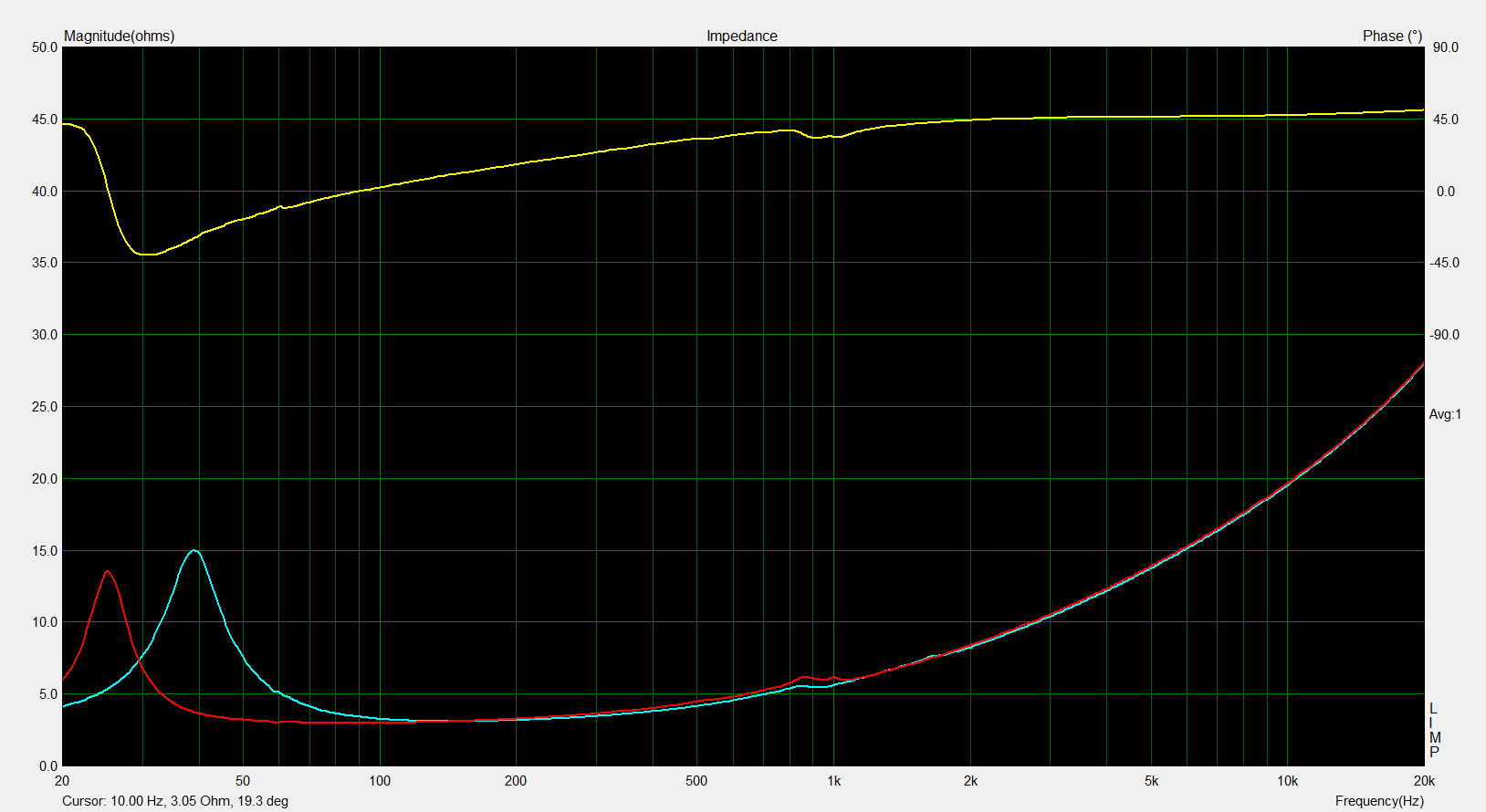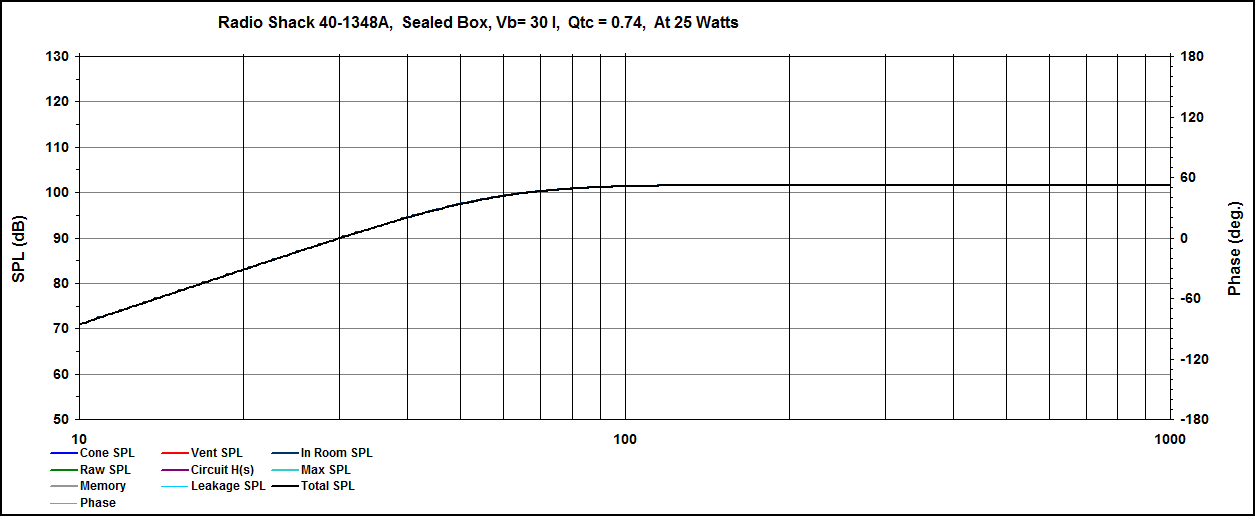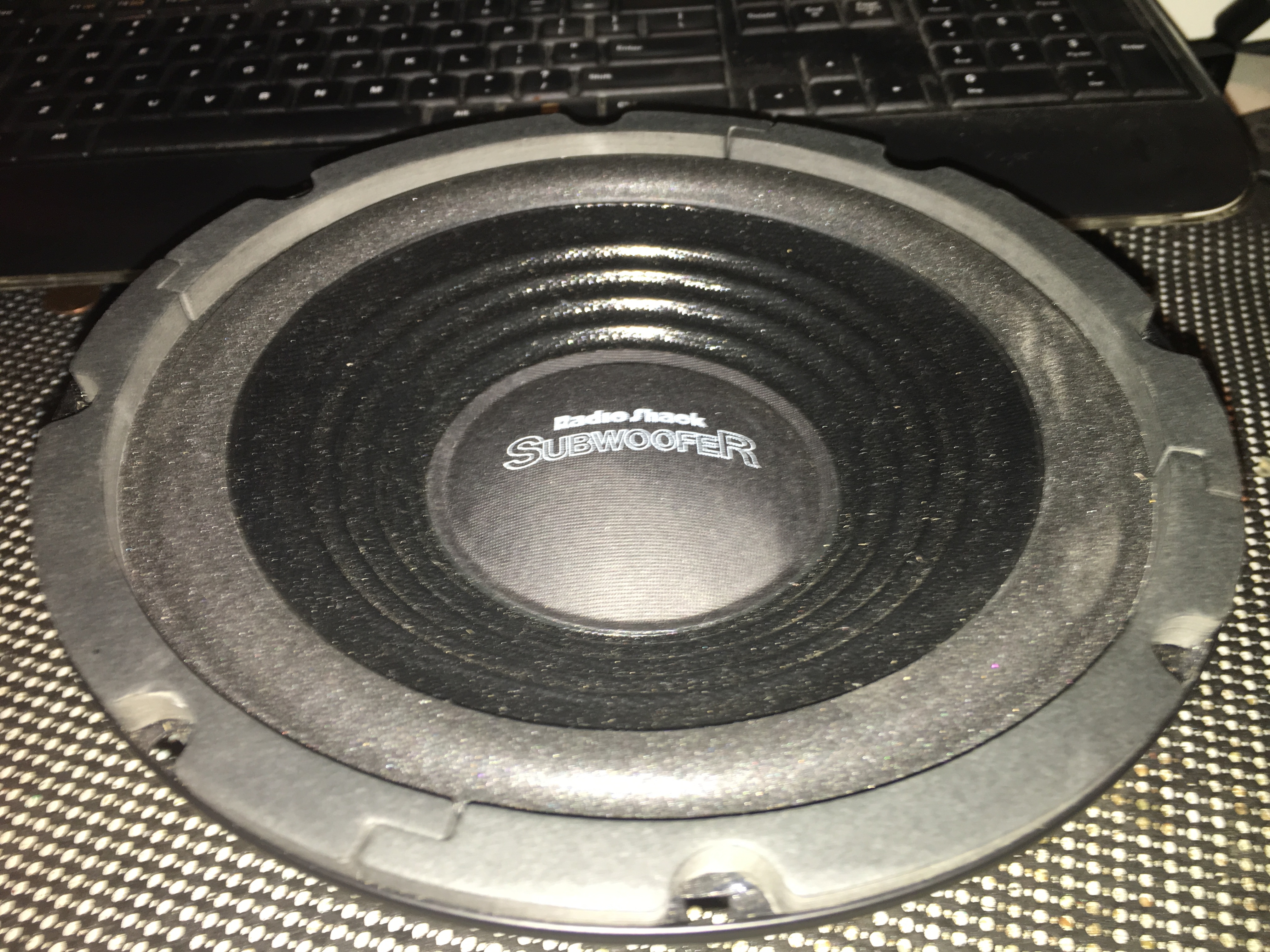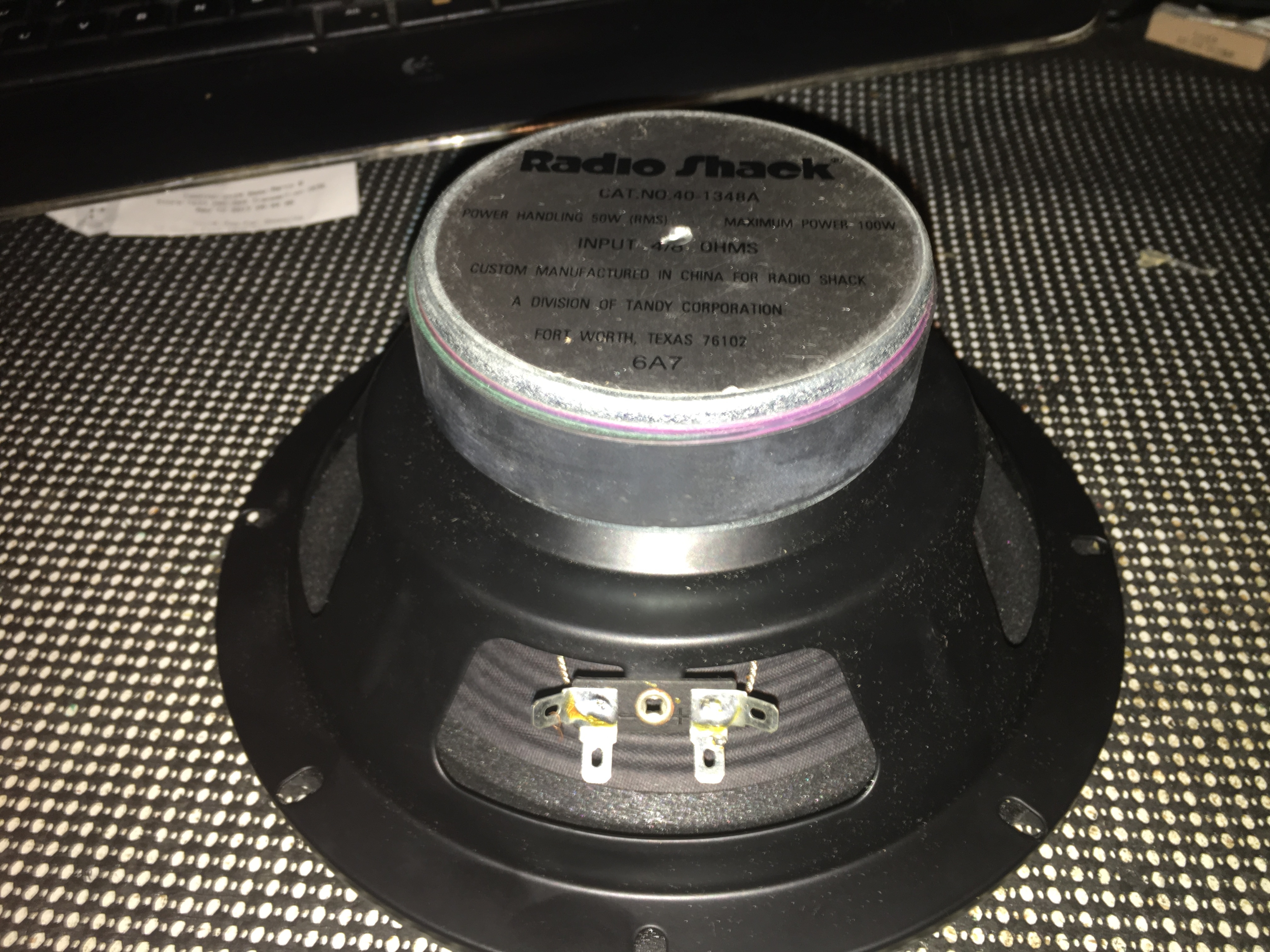Site Links
Howdy, Stranger!
It looks like you're new here. If you want to get involved, click one of these buttons!
Quick Links
Categories
Who's Online (0)
Radio Shack 8" DVC subwoofer
Hand exercised only.
Soooo... reasonably close to advertised, and another good example of how drivers used to be engineered for sealed box applications, rather than just throwing a High Q motor under a cone and advertising them for use in sealed enclosures.
To wit: in one heavily stuffed cubic foot, this driver has F3/6/10 of 55/43/33 and a Q of 0.74
I calculate about 5mm +/- of coil throw, and I was not able to bottom the coil out against the back plate, so even with the 3.35mm "peak to peak" excursion advertised, I am guessing this woofer will exceed that figure fairly gracefully. I used to have a pair in an old S-10 Blazer and my experience seems to indicate my guess to be fairly accurate.
so here we have an 8" driver that will dig fairly low in a small sealed box whole offering very, very nice sensitivity (check out that 2.83V number, folks). This appears to be a reasonably well designed driver, even by modern budget driver standards.
Here is the impedance curve along with the overlay I took for calculating Vas:

Here is a modeled response:

Here are a couple snapshots of the driver itself:

Loudspeaker parameters (Radio Shack advertised in paranthesis):
Fs = 39.09 Hz (39)
Re = 2.58 ohms[dc] (2.9)
Le = 154.64 uH
L2 = 516.05 uH
R2 = 13.01 ohms
Qt = 0.58 (0.59)
Qes = 0.70 (0.72)
Qms = 3.35 (3.26)
Mms = 24.34 grams
Rms = 1.784746 kg/s
Cms = 0.000681 m/N
Vas = 43.72 liters (36.8L)
Sd= 213.82 cm^2
Bl = 4.708406 Tm
ETA = 0.35 %
Lp(2.83V/1m) = 92.49 dB
Added Mass Method:
Added mass = 40.00 grams
Diameter= 16.50 cm
Soooo... reasonably close to advertised, and another good example of how drivers used to be engineered for sealed box applications, rather than just throwing a High Q motor under a cone and advertising them for use in sealed enclosures.
To wit: in one heavily stuffed cubic foot, this driver has F3/6/10 of 55/43/33 and a Q of 0.74
I calculate about 5mm +/- of coil throw, and I was not able to bottom the coil out against the back plate, so even with the 3.35mm "peak to peak" excursion advertised, I am guessing this woofer will exceed that figure fairly gracefully. I used to have a pair in an old S-10 Blazer and my experience seems to indicate my guess to be fairly accurate.
so here we have an 8" driver that will dig fairly low in a small sealed box whole offering very, very nice sensitivity (check out that 2.83V number, folks). This appears to be a reasonably well designed driver, even by modern budget driver standards.
Here is the impedance curve along with the overlay I took for calculating Vas:

Here is a modeled response:

Here are a couple snapshots of the driver itself:


Classic treated, ribbed paper cone and stamped basket. Wonderful walk down memory lane holding this in my hands.
I have a signature.




Comments
InDIYana Event Website